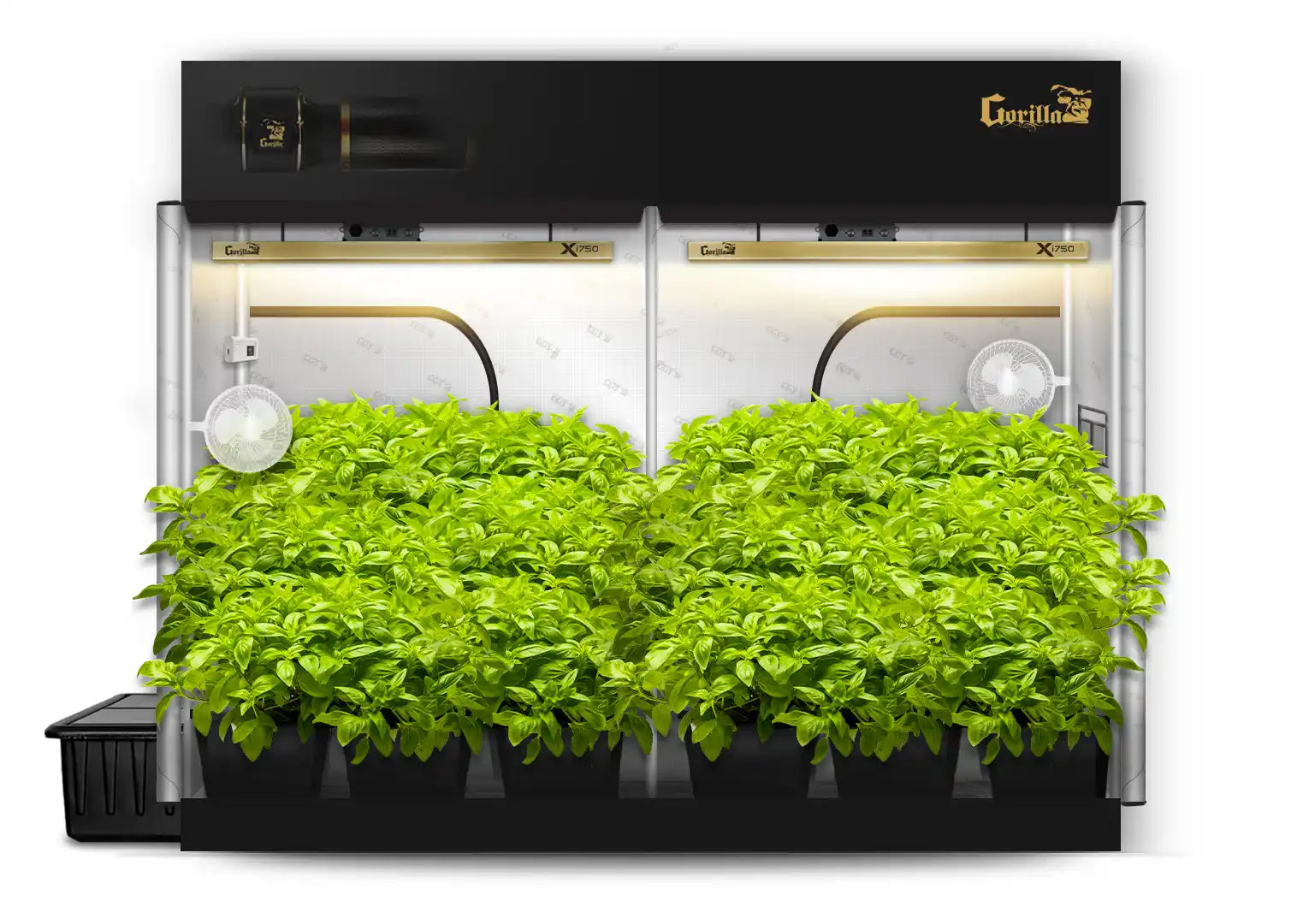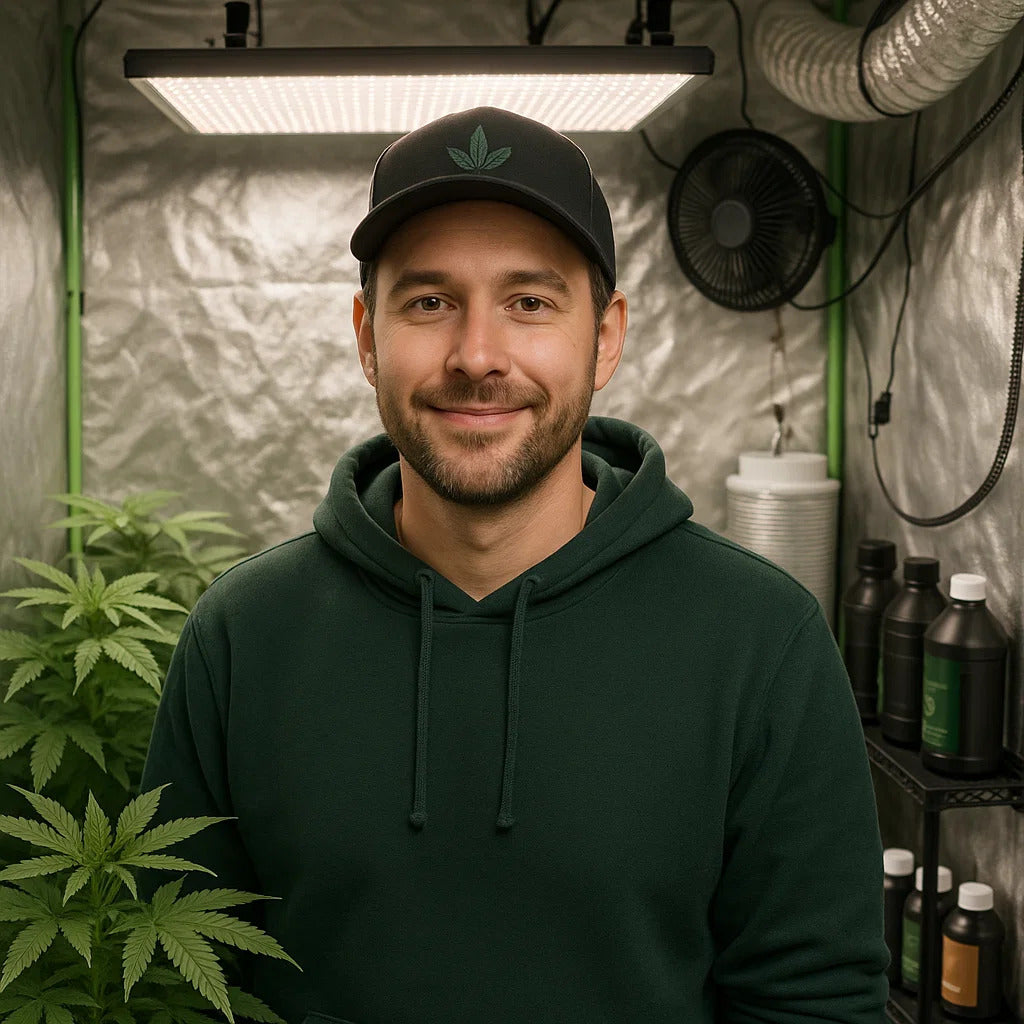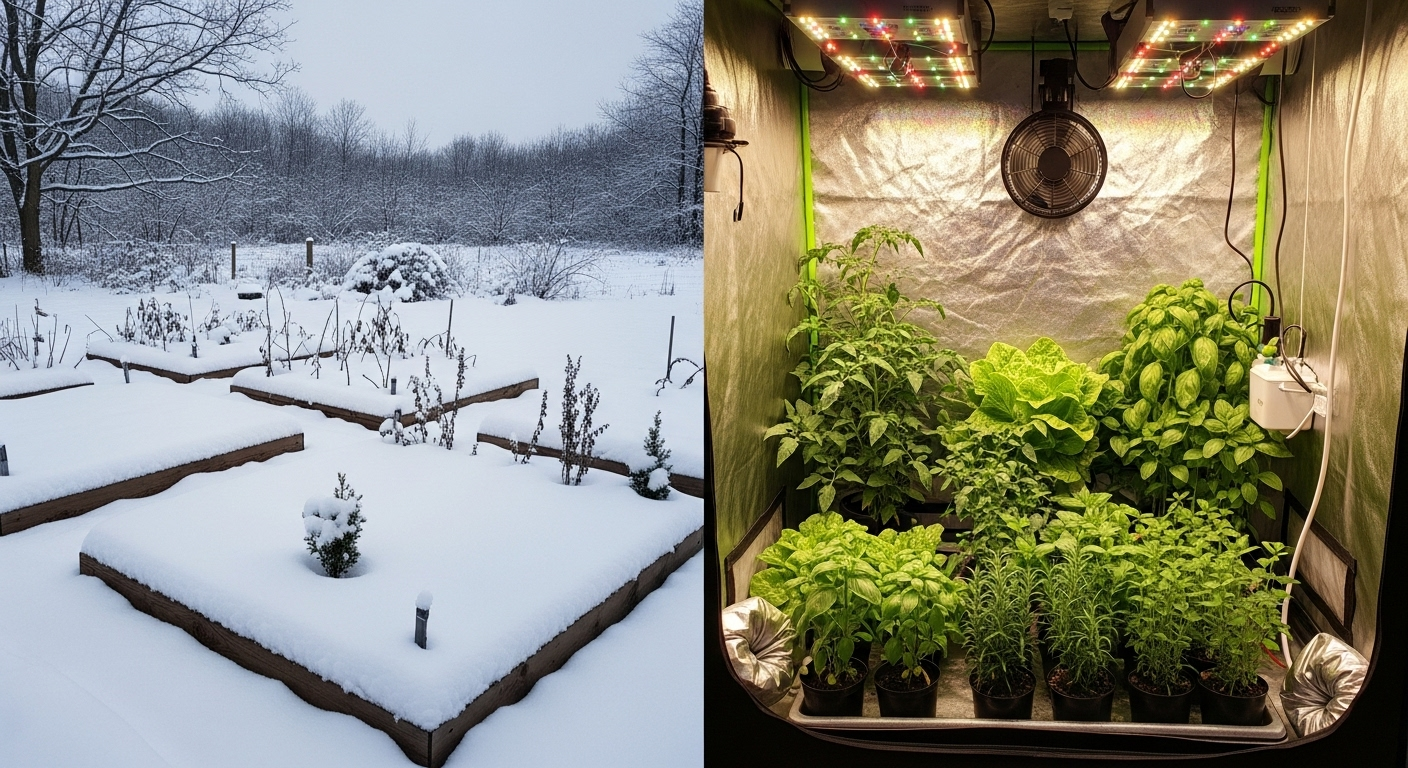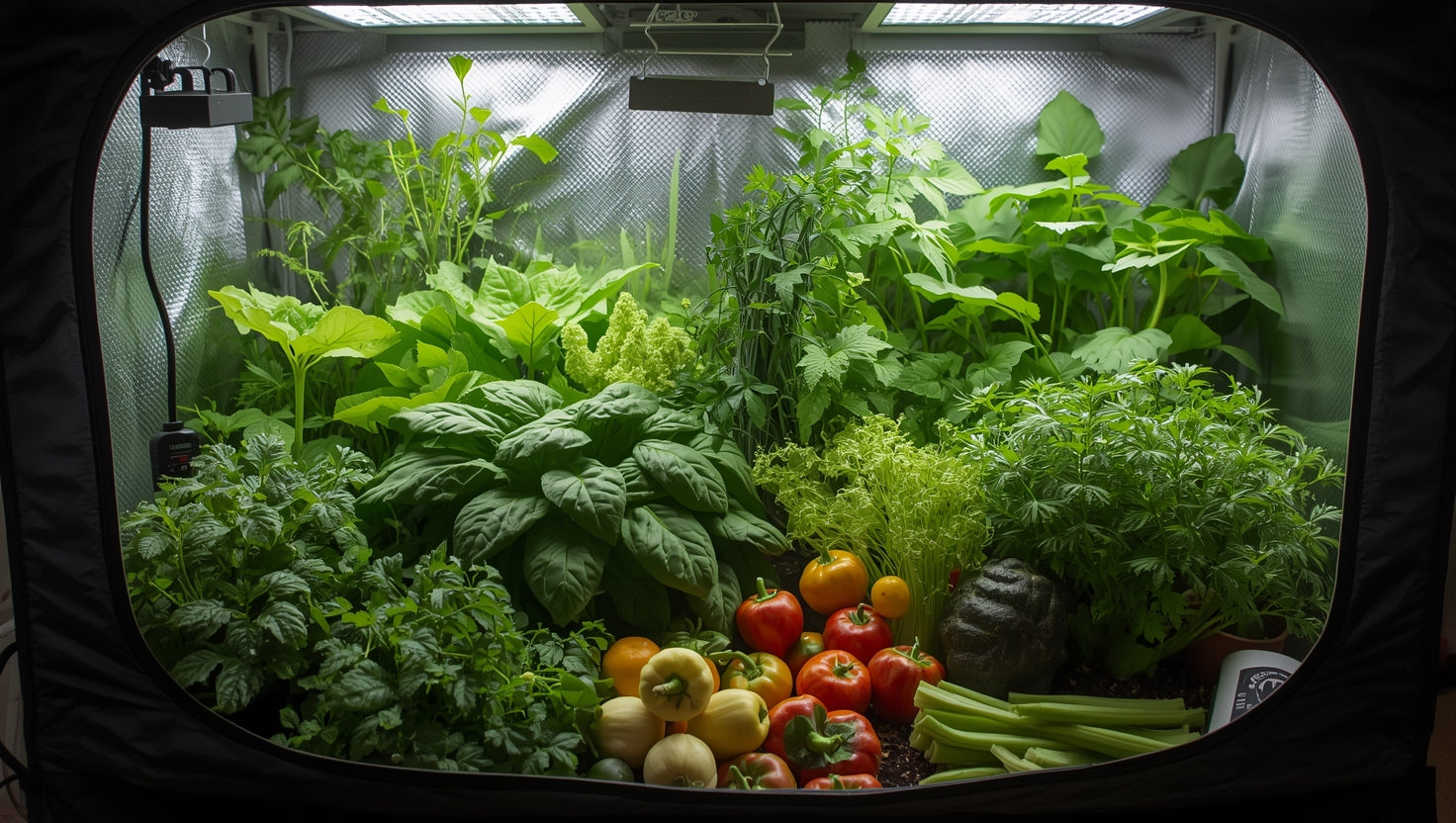
Essential Tips for Indoor Greenhouse Gardening: Your Complete Guide to Success
Indoor greenhouse gardening combines the best of both worlds—the controlled environment of indoor growing with the productive capacity of greenhouse cultivation. Whether you're using a dedicated grow tent, a converted space in your home, or a purpose-built indoor greenhouse, the right techniques can dramatically improve your results. This comprehensive guide shares essential tips that will help transform your indoor garden from merely surviving to vibrantly thriving.
Creating the Optimal Growing Environment
The foundation of successful indoor greenhouse gardening lies in creating and maintaining perfect environmental conditions for your plants. Unlike outdoor gardens at the mercy of weather patterns, your indoor greenhouse gives you complete control over these critical factors.
Mastering Light Management
Light is perhaps the most crucial element in your indoor greenhouse:
- Understand light requirements: Different plants need different intensities and durations of light. Fruiting plants like tomatoes and peppers typically need 14-16 hours of strong light, while leafy greens can thrive with 10-12 hours of moderate light.
- Position lights properly: Maintain appropriate distances between your lights and plant canopy—typically 18-24 inches for LEDs, adjusting as plants grow. The Gorilla Grow Tent with height extension kits allows you to adjust your ceiling height as plants mature, ensuring optimal light positioning throughout the growing cycle.
- Use reflective surfaces: Maximize light efficiency with reflective interior surfaces. The 1680D reflective lining in Gorilla Grow Tents returns up to 30% more light to your plants than standard grow tents, improving growth and reducing energy costs.
- Consider light spectrum: Vegetative growth responds best to blue-dominant light (5000-6500K), while flowering and fruiting benefit from increased red spectrum (2700-3500K). Full-spectrum Gorilla Grow Lights provide the complete range needed for all growth stages.
- Implement light schedules: Use timers to maintain consistent light cycles, crucial for photoperiod-sensitive plants. Inconsistent timing can stress plants and reduce yields.

Temperature and Humidity Control
The climate inside your greenhouse directly impacts plant health, growth rates, and susceptibility to diseases:
- Maintain appropriate temperatures: Most plants thrive between 65-80°F (18-27°C) during day cycles and prefer a slight drop (5-10°F) during night cycles. Extreme temperatures in either direction can stress plants and reduce growth.
- Create temperature zones: If growing diverse plants, arrange your greenhouse to create microclimate zones, with heat-loving plants positioned higher up (where warm air collects) and cool-preferring plants at lower levels.
-
Monitor humidity levels: Different growth stages require different humidity levels:
- Seedlings/clones: 70-80% humidity
- Vegetative growth: 50-70% humidity
- Flowering/fruiting: 40-50% humidity
- Prevent condensation: Good air circulation helps prevent moisture buildup on plants and surfaces that can lead to mold and mildew issues. Proper ventilation is essential, particularly in enclosed grow tent environments.
- Use environmental controllers: Automated controllers maintain perfect conditions without constant monitoring. For more comprehensive information about environmental control, check out our blog on optimizing grow room climate.
Air Circulation and Ventilation Strategies
Proper airflow is often overlooked but critical for plant health:
- Ensure appropriate air exchange: Replace the air volume in your greenhouse 3-5 times per hour to maintain fresh CO₂ levels and control humidity.
- Position fans strategically: Use oscillating fans to create gentle, consistent air movement across all plants. Avoid pointing fans directly at plants, which can cause stress through excessive transpiration.
- Create vertical air movement: Warm air rises, so ensure circulation that moves air from floor to ceiling and back. This prevents hot spots and cold pockets in your growing space.
- Consider CO₂ supplementation: In sealed environments with controlled air exchange, adding CO₂ can boost photosynthesis by 30-50%. Begin experimenting with CO₂ only after mastering basic environmental controls.
Soil and Nutrition Management
The growing medium and nutrient management form the foundation of plant health in your indoor greenhouse.
Choosing the Right Growing Medium
Your choice of growing medium significantly impacts watering frequency, nutrient availability, and root health:
- Premium potting mixes: For traditional soil growing, choose lightweight, well-draining mixes specifically designed for containers. Regular garden soil is too dense for indoor growing and can harbor pests and pathogens.
- Soilless options: Coco coir, perlite blends, and rockwool provide excellent drainage and aeration while remaining lightweight. These media require more frequent feeding but offer better control over nutrient delivery.
- Hydroponic systems: Consider ebb and flow, deep water culture, or nutrient film techniques for the fastest growth rates and highest yields in limited spaces. These soil-free methods can produce harvests up to 30% faster than traditional growing.
- Living soil systems: For organic growers, living soil with beneficial microorganisms can reduce the need for added nutrients and create a self-sustaining growing ecosystem.

Nutrient Application Best Practices
Feeding your plants appropriately ensures vigorous growth without nutrient-related problems:
- Follow a feeding schedule: Begin with the manufacturer's recommended schedule but be prepared to adjust based on plant response. Different growth stages require different nutrient ratios.
- Start light and increase gradually: Most nutrient-related problems come from overfeeding rather than underfeeding. Begin at 50-75% of recommended strength, especially with seedlings and young plants.
-
Monitor electrical conductivity (EC): For precision feeding, measure the EC of your nutrient solution. Most plants prefer:
- Seedlings: 0.8-1.0 EC
- Vegetative growth: 1.2-1.8 EC
- Flowering/fruiting: 1.8-2.5 EC
- Maintain proper pH: Nutrients are only available to plants within specific pH ranges. For soil, maintain 6.0-7.0 pH; for hydroponics and soilless media, keep pH between 5.5-6.5.
- Implement flush periods: Occasionally water with plain pH-adjusted water to prevent nutrient salt buildup in the growing medium. This is especially important before harvest for consumable plants.
Water Quality and Irrigation
Water is the medium that delivers nutrients to your plants, making quality and delivery crucial:
- Test water source: Municipal water often contains chlorine, chloramine, or high mineral content that can affect plant health. Consider filtration for sensitive plants.
- Water temperature matters: Cold water can shock roots and slow growth. Aim for water temperatures between 65-75°F (18-24°C).
- Establish proper watering frequency: Most indoor greenhouse plants prefer a cycle of wet-to-slightly-dry rather than constantly moist conditions. Learn to judge by container weight rather than soil surface appearance.
- Consider automation: Drip systems, flood tables, or self-watering containers can provide consistent moisture levels and reduce daily maintenance, especially in larger setups.
Plant Selection and Management
Choosing appropriate plants and managing their growth cycles significantly impacts your indoor greenhouse success.
Choosing Indoor-Friendly Plant Varieties
Not all plant varieties perform equally in indoor conditions:
- Select compact varieties: Look for determinate, dwarf, bush, or patio varieties that won't outgrow your space. The Gorilla Grow Tent Height Extension Kit can accommodate taller varieties, but choosing naturally compact plants maximizes space efficiency.
- Focus on high-value crops: Prioritize plants that are expensive to purchase or deteriorate quickly after harvest, such as culinary herbs, leafy greens, and cherry tomatoes.
- Consider light requirements: Group plants with similar light needs together. Mixing sun-loving plants with shade-preferring varieties complicates light management.
- Choose disease-resistant varieties: Indoor conditions can sometimes favor certain pathogens. Selecting resistant varieties provides an additional layer of protection.
Pruning and Training Techniques
Proper plant management optimizes space and increases yields:
- Implement regular pruning: Remove lower, non-productive foliage to improve air circulation and focus plant energy on productive areas.
- Train for horizontal growth: Techniques like LST (low-stress training), SCROG (screen of green), and trellising spread plants horizontally rather than vertically, maximizing light exposure and yield per square foot.
- Practice succession planting: Start new seedlings as existing plants approach the end of their productive cycle to maintain continuous harvests.
- Consider plant spacing: Proper spacing improves airflow and light penetration while preventing the spread of pests and diseases between plants. Avoid overcrowding, even when plants are small.
Pest and Disease Prevention
The enclosed environment of an indoor greenhouse provides natural protection, but vigilance remains essential:
- Inspect regularly: Check plants thoroughly at least twice weekly, paying special attention to leaf undersides and new growth where pests often begin.
- Maintain cleanliness: Keep floors swept, remove dead plant material promptly, and disinfect tools between uses to prevent pathogen spread.
- Implement quarantine procedures: Isolate new plants for 1-2 weeks before introducing them to your main growing area. This prevents hitchhiking pests from infesting established plants.
- Use preventative treatments: Consider beneficial insects, neem oil applications, or microbial inoculants as preventative measures rather than waiting for problems to develop.
- Control entry points: The Gorilla Grow Tent features pest-resistant mesh ports and tight seals that prevent common pests from entering your growing environment.
Advanced Tips for Experienced Growers
Once you've mastered the basics, these advanced techniques can further enhance your indoor greenhouse results.
Implementing Automation Systems
Automation saves time and improves consistency:
- Environmental controllers: Devices that monitor and adjust temperature, humidity, and ventilation ensure perfect conditions 24/7.
- Irrigation automation: Programmable systems deliver precise amounts of water and nutrients on optimal schedules.
- Light controllers: Advanced timers can simulate sunrise/sunset transitions and adjust spectrum throughout the day for more natural growing conditions.
- Remote monitoring: Systems that alert you to condition changes via smartphone allow intervention before plants suffer stress.
Maximizing Energy Efficiency
Reduce operating costs while maintaining optimal conditions:
- LED lighting: Modern LED systems produce significantly more light per watt consumed than older technologies, with minimal heat production.
- Insulation considerations: Proper insulation reduces heating/cooling requirements. The Gorilla Grow Tent features 1680D fabric that provides superior insulation compared to standard grow tents.
- Timing utility usage: Run equipment during off-peak hours when possible to reduce electricity costs.
- Heat recovery systems: Capture and redirect heat from lights and equipment rather than exhausting it all outside during colder months.
For more advanced energy-saving techniques, our blog on efficient indoor growing provides detailed strategies.
FAQ: Indoor Greenhouse Gardening
What is the ideal temperature range for an indoor greenhouse?
Most plants thrive in daytime temperatures between 65-80°F (18-27°C) with a slight drop of 5-10°F at night. Tropical plants may prefer temperatures at the higher end of this range, while cool-season crops like lettuce and spinach perform better at the lower end. Temperature stability is crucial—rapid fluctuations stress plants more than consistent temperatures slightly outside the ideal range. Using a quality thermometer with minimum/maximum memory helps track temperature patterns, especially during periods when you're not monitoring the greenhouse.
How do I determine the right size grow tent for my indoor greenhouse?
When selecting a Gorilla Grow Tent size, calculate your space requirements by considering: 1) The mature size of your chosen plants, 2) How many plants you wish to grow, 3) Equipment space needs (lights, fans, etc.), and 4) Working space for maintenance. As a general rule, add 20-30% more space than you think you'll need to accommodate unexpected growth and provide adequate air circulation. Remember that vertical space is as important as floor area—the height-adjustable feature of Gorilla Grow Tents provides flexibility as plants mature.
What's the best way to control humidity in an indoor greenhouse?
Humidity control requires a multi-faceted approach depending on whether you need to increase or decrease moisture levels. To increase humidity: use spray bottles for localized moisture, place trays of water near air circulation paths, or add a humidifier for larger spaces. To reduce humidity: improve ventilation with stronger fans or more frequent air exchanges, add a dehumidifier sized appropriately for your space, and water plants in the morning to allow excess moisture to evaporate during the day. For precise control, a digital hygrometer with controller can automatically activate humidity equipment when levels fall outside your set parameters.
How often should I fertilize plants in my indoor greenhouse?
Fertilization frequency depends on your growing medium and plant types. For soil-based systems, apply diluted fertilizer every 7-14 days during active growth periods. Soilless media like coco coir requires more frequent feeding, typically every 2-5 days at lighter concentrations. Hydroponic systems need constant nutrient availability, with solution changes every 7-14 days. Regardless of system, always observe your plants for feedback—pale new growth often indicates nutrient deficiency, while leaf tip burn may signal over-fertilization. During winter months or dormant periods, reduce feeding frequency by approximately 50% to match the plant's slower metabolic rate.
What are the most common mistakes in indoor greenhouse gardening?
The most frequent indoor greenhouse mistakes include: 1) Insufficient light intensity—many growers underestimate plants' light requirements, leading to leggy, weak growth, 2) Overwatering—more indoor plants die from too much water than too little, 3) Poor air circulation—stagnant air creates disease-friendly conditions, 4) Overcrowding—packing too many plants reduces airflow and light penetration while increasing pest and disease spread, and 5) Inconsistent environment—frequent fluctuations in temperature, humidity, or lighting stress plants and reduce yields. Beginners should start with fewer, more resilient plants before expanding to more sensitive varieties.
Featured Snippet Summary
Essential indoor greenhouse gardening tips include maintaining temperatures between 65-80°F, positioning LED grow lights 18-24 inches from plant canopy, grouping plants with similar requirements together, and establishing consistent watering schedules. Create proper humidity levels (50-70% for vegetative growth, 40-50% for flowering), ensure good air circulation with oscillating fans, and use quality growing media. Implement regular monitoring routines and consider automation for consistent environmental control.
Elevate Your Indoor Greenhouse Experience
The journey to indoor greenhouse mastery involves continuously refining your approach and learning from each growing cycle. The tips outlined in this guide provide a solid foundation for success, but the real magic happens when you apply these principles to your specific environment and plant selection.
Ready to take your indoor gardening to the next level? Our Gorilla Grow Tent Complete Packages provide everything you need for a professional-grade indoor greenhouse setup. From industry-leading grow tent construction to perfectly matched lighting and ventilation components, these complete systems eliminate the guesswork and compatibility issues common with pieced-together setups.
Visit our website today to explore our full range of indoor growing solutions designed by growers, for growers. Your perfect harvest awaits—with the right knowledge and equipment, you'll be amazed at what's possible in your indoor greenhouse!

Lena Myles
I'm a mushroom enthusiast and home cook based in Oregon. I'm passionate about foraging and creating fungi-focused recipes, especially delicious, plant-based dishes using gourmet mushrooms like trumpet, shiitake, and oyster. When I’m not in the kitchen, you’ll usually find me wandering the woods in search of new wild flavors.


